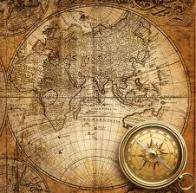China's Autonomous Regions
By: By Amanda Briney

China's Autonomous Regions
China is the world's fourth-largest country based on the area with a total of 3,705,407 square miles (9,596,961 sq km) of land. Because of its large area, China has several different subdivisions of its land. For example, the country is divided into 23 provinces , five autonomous regions, and four municipalities. In China, an autonomous region is an area that has its own local government and is directly below the federal government. In addition, autonomous regions were created for the country's ethnic minority groups.
The following is a list of China's five autonomous regions.
Xinjiang
:max_bytes(150000):strip_icc():format(webp)/GettyImages-683836549-58b9df2a5f9b58af5cbb9422.jpg)
Xu Mian / EyeEm/Getty Images
Xinjiang is located in northwestern China and it is the largest of the autonomous regions with an area of 640,930 square miles (1,660,001 sq km). The population of Xinjiang is 21,590,000 people (2009 estimate). Xinjiang makes up more than one-sixth of China's territory and it is divided by the Tian Shan mountain range which creates the Dzungarian and Tarim basins. The Taklimakan Desert is in the Tarim Basin and it is home to China's lowest point, Turpan Pendi at -505 m (-154 m). Several other rugged mountain ranges including the Karakoram, Pamir, and Altai mountains are also within Xianjiang.
The climate of Xianjiang is arid desert and because of this and the rugged environment, less than 5% of the land can be inhabited.
Tibet
:max_bytes(150000):strip_icc():format(webp)/GettyImages-82702220-58b9df415f9b58af5cbbae2b.jpg)
Buena Vista Images/Getty Images
Tibet , officially called the Tibet Autonomous Region, is the second-largest autonomous region in China and it was created in 1965. It is located in the southwestern part of the country and covers an area of 474,300 square miles (1,228,400 sq km). Tibet has a population of 2,910,000 people (as of 2009) and a population density of 5.7 persons per square mile (2.2 persons per sq km). Most of Tibet's people are of Tibetan ethnicity. The capital and largest city of Tibet is Lhasa.
Tibet is known for its extremely rugged topography and for being home to the highest mountain range on Earth; the Himalayas. Mount Everest , the highest mountain in the world is on its border with Nepal. Mount Everest rises to an elevation of 29,035 feet (8,850 m).
Inner Mongolia
:max_bytes(150000):strip_icc():format(webp)/GettyImages-125100121-58b9df3a5f9b58af5cbba826.jpg)
shenzhen harbour/Getty Images
Inner Mongolia is an autonomous region that is located in northern China. It shares borders with Mongolia and Russia and its capital is Hohhot. The largest city in the region, however, is Baotou. Inner Mongolia has a total area of 457,000 square miles (1,183,000 sq km) and a population of 23,840,000 (2004 estimate). The main ethnic group in Inner Mongolia is Han Chinese, but there is a substantial Mongol population there as well. Inner Mongolia stretches from northwest China to northeast China and as such, it has a highly varied climate, although much of the region is influenced by monsoons. Winters are usually very cold and dry, while summers are very hot and wet.
Inner Mongolia occupies about 12% of China's area and it was created in 1947.
Guangxi
:max_bytes(150000):strip_icc():format(webp)/GettyImages-596891346-58b9df343df78c353c4c07eb.jpg)
Moment/Getty Images
Guangxi is an autonomous region located in southeast China along the country's border with Vietnam. It covers a total area of 91,400 square miles (236,700 sq km) and it has a population of 48,670,000 people (2009 estimate). The capital and largest city of Guangxi is Nanning which is located in the southern part of the region about 99 miles (160 km) from Vietnam. Guangxi was formed as an autonomous region in 1958. It was created mainly as a region for the Zhaung people, the largest minority group in China.
Guangxi has a rugged topography that is dominated by several different mountain ranges and large rivers. The highest point in Guangxi is Mount Mao'er at 7,024 feet (2,141 m). The climate of Guangxi is subtropical with long, hot summers.
Ningxia
:max_bytes(150000):strip_icc():format(webp)/GettyImages-530234734-58b9df305f9b58af5cbb9be7.jpg)
Christian Kober/AWL Images/Getty Images
Ningxia is an autonomous region that is located in northwest China on the Loess Plateau. It is the smallest of the country's autonomous regions with an area of 25,000 square miles (66,000 sq km). The region has a population of 6,220,000 people (2009 estimate) and its capital and largest city is Yinchuan. Ningxia was created in 1958 and its main ethnic groups are the Han and the Hui people.
Ningxia shares borders with the provinces of Shaanxi and Gansu as well as the autonomous region of Inner Mongolia. Ningxia is mainly a desert region and as such, it is largely unsettled or developed. Ningxia is also located over 700 miles (1,126 km) from the ocean and the Great Wall of China runs along its northeastern boundaries.






